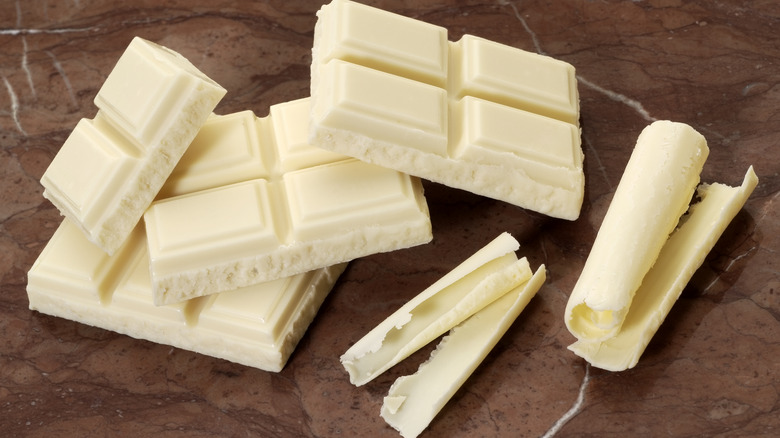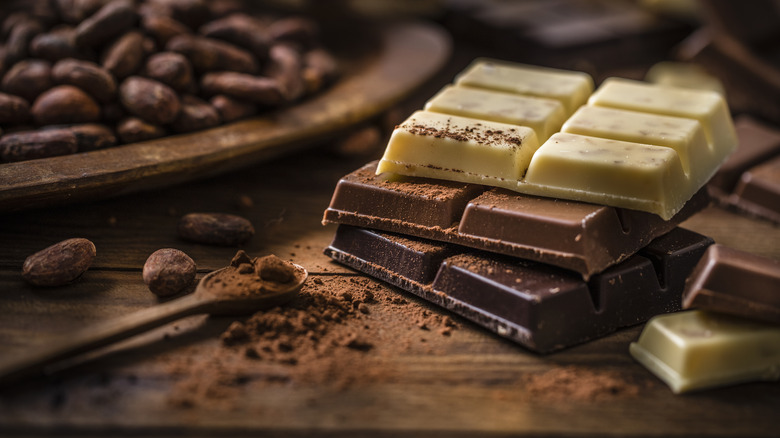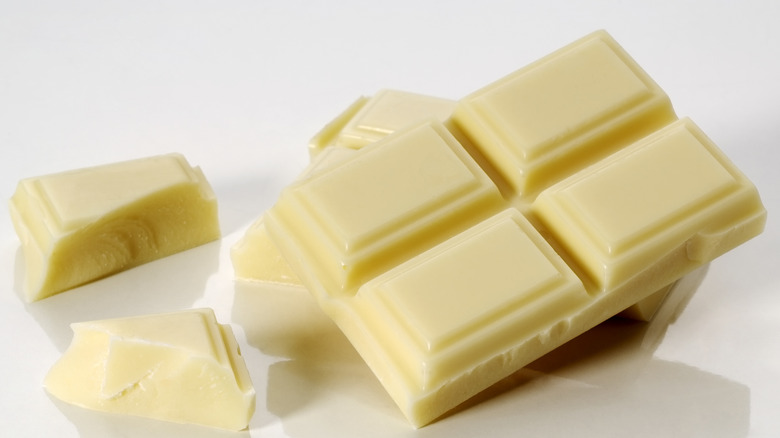Why The FDA Once Ruled Out White Chocolate As Real Chocolate
White chocolate is extremely controversial within the confectionary community. Ever since its invention, chocolatiers have been arguing over its legitimacy, with many contending that white chocolate isn't even chocolate. And they aren't the only ones to make this argument. In fact, the United States Food and Drug Administration (FDA) took the same stance until 2002.
While chocolate is a famously ancient food, many of the versions we have today are surprisingly recent. White chocolate isn't even a century old, having been introduced by Nestlé in 1936. Believe it or not, white chocolate was actually invented by accident. At the time, Nestlé was producing a liquid children's formula called Nestrovit, and they were curious to find out if they could make a solid version as well. They tried adding cocoa butter to the mix and ended up making a new dessert staple.
In many ways, white chocolate is still finding its identity, and up until pretty recently, that identity didn't even include the word chocolate. The FDA originally defined white chocolate as "white confectionary coating" or simply "confectionary coating" because it's missing one particular ingredient.
What makes white chocolate different from other types of chocolate?
To explain where the controversy over white chocolate's identity comes from, we need to understand how white chocolate is made, and how the process differs from other forms of chocolate. As you probably know, chocolate is made from cocoa beans, the fruit of the cacao tree. Each bean contains cocoa nibs, which are ground into a paste called cocoa liquor. The liquor is then pressed to separate the solids from the fat, which is referred to as cocoa butter.
Dark chocolate and milk chocolate are both made from the complete cocoa liquor, meaning cocoa butter and solids. White chocolate, on the other hand, does not contain any of the solids in cocoa liquor, only the cocoa butter, which is why it lacks color. The cocoa percentage of chocolate has massive implications for its status, and at first, the FDA decided that white chocolate didn't make the cut. This rule stood for decades, but it's not true anymore.
Where the FDA stands today
In 2002, the FDA updated the Federal Register, establishing what it referred to as a "final rule" regarding the status of white chocolate. The rule went into effect on the first day of 2004, establishing a new definition for white chocolate, and yes, they did use that name. No more "confectionary coating."
The change was prompted by petitions filed by the Chocolate Manufacturers Association of the United States of America, and by the Hershey Foods Corporation. The latter has a long history of controversy in the chocolate industry; many Europeans have criticized Hershey for its chocolate formulations, and not just those of white chocolate.
Nevertheless, these formidable chocolate forces were able to sway the FDA to establish new standards for white chocolate. According to the Code of Federal Regulations Title 21, white chocolate must contain at least 20% cocoa butter, but it doesn't establish any rules regarding cocoa solids, or cocoa liquor as a whole.


